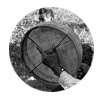Places | Alááʔ S̱atǫ / Petersen's Crossing

Stories

Billy Attachie, talking about the Dreamer Nááchįį/Oker, 2005.
![]() Click to Watch
Click to Watch
Billy Attachie talks about the Dreamer Nááchįį/Oker, who lived and died at Alááʔ S̱atǫ (Petersen's Crossing). Alááʔ S̱atǫ, 2005.
Songs

Albert Askoty singing a song by the Dreamer Nááchįį/Oker, 1994.
The late song keeper Albert Askoty sings a song dreamed by one of his mentors, the Dreamer Nááchįi/Oker. This was recorded at the memorial Tea Dance for Alice Moccasin (Albert's wife) at Doig River, BC, in 1994. Alice Moccasin settled at Petersen's Crossing in the 1940's with her first husband, the Dreamer Nááchįį/Oker. After Oker died in 1951 Alice remarried Albert Askoty and they continued to live at Petersen's Crossing until the late 1980s. This performance is a powerful tribute to the woman who connected the lives of the Dreamer Oker and Albert Askoty so intimately.

Billy Makadahay singing a song by the Dreamer Adíshtl'íshe, 1969.
Billy Makadahay sings a song by the Dreamer Adíshtl'íshe. Billy Makadahay settled at Petersen's Crossing in the early 1950s. This was recorded at the memorial Tea Dance for Anno Davis. Doig River, August 1969.
Petersen's Crossing Photos:
Slide show not displaying? Click here to view images
Our name for Petersen's Crossing is Alááʔ S̱atǫ, which means "Boat Sitting There." Alááʔ S̱atǫ is a major point in our trail system because the stepped terraces provide a natural place to cross the Beatton River. Today the road follows our trail, and we drive across the bridge at Alááʔ S̱atǫ on our way between Doig River and Fort St. John.
Alááʔ S̱atǫ came to be known as Petersen's Crossing when Ernie Petersen established a store there in the 1930s. Petersen's store was strategically located across the river from where we traditionally camped, so that he could easily buy furs from us.
After World War II, when we lost our reserve at Suunéch'ii Kéch'iige (Montney), the Indian Agent, Galibois, set up a Day School at Petersen's Crossing and told our people that if we didn't send our kids to school, our children would be taken away from us and sent to a residential school. In order to keep our children with us, many of our people settled at Alááʔ S̱atǫ for the winter and built log cabins there to live in.
When our reserve at Hanás̱ Saahgéʔ (Doig River) was established in 1952, many people moved to Doig, but a handful of people, including many members of the Askoty, Makadahay, Oker, and Pouce Coupe families, continued to live at Alááʔ S̱atǫ.
Our Dreamer Oker, had a camp, and later a cabin, at Alááʔ S̱atǫ. Oker passed away in 1951, but "Oker Flats," the area around his camp where we would gather for our Dreamers' Dances, is named in memory of him. Oker died there, and his grave is still located in our cemetery at Alááʔ S̱atǫ.
Billy Attachie remembers the death of Oker and his life at Alááʔ S̱atǫ. He also recalls other Dreamers such as Charlie Yahey and Gaayęą who came to visit Oker at Alááʔ S̱atǫ, and to share songs and stories, and dance with our people there.


